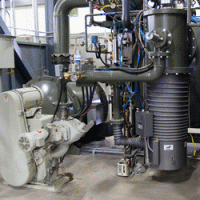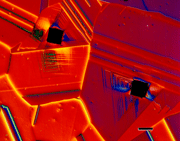Well-designed piping of vacuum equipment, as well as proper component selection, increases production efficiency by minimizing the vacuum pumping time. It also minimizes energy use, making your equipment less expensive to operate. Ignoring the principle of conductance and designing the system with only physical configuration and flow rates in mind, can cause delayed equipment startup, plant downtime, and process inefficiency because if a problem is found after startup, it can take considerable time and money to correct.
Archives for October 2015
Avoid Microindentation Hardness Testing at Low Loads!
For many years, ASTM E384 has stated that the load range for microindentation hardness testing with both Knoop and Vickers indenters is 1 to 1000 gf. But, it also states that tests that produce a Knoop long diagonal or a Vickers mean diagonal of < 20 gf should be avoided as the precision in measuring such small indents is poor. The standard recommends using loads no lower than 25 gf. This article shows that the Knoop test exhibits better measurement precision at loads of 200 gf and below because the long diagonal is 2.7 times greater in length than the Vickers mean diagonal length for the same specimen tested at identical loads. Knoop, however, does not produce constant hardness values as the load changes, which is a major problem. If one can use a 100X objective with a numerical aperture of 0.95 – while obtaining adequate image contrast – indents as small as 14.7 μm in length could be measured. But, the challenge is to obtain acceptable image contrast at 1000X magnification so that the indent tips can be clearly seen. Realistically, a minimum diagonal length of 20 μm is a better target.
Image Caption: Aluminum brass, Cu-22% Zn – 2% Al that was solution annealed at 850C (producing a nice coarse grain size – average of ASTM 3.3). The specimen was etched with Beraha’s PbS tint etched and viewed with Nomarski DIC to bring out the deformation around the Vickers indents. The hardness was 57 HV – very soft! A 500 gf load was used. And it was taken at 100X.


